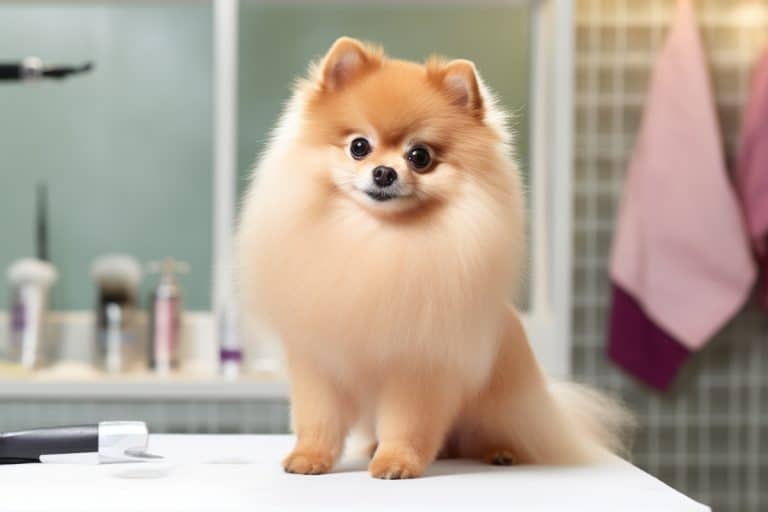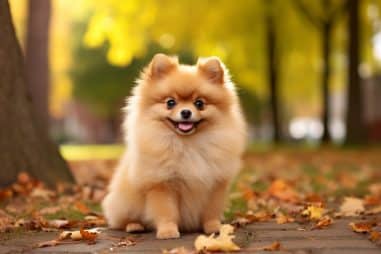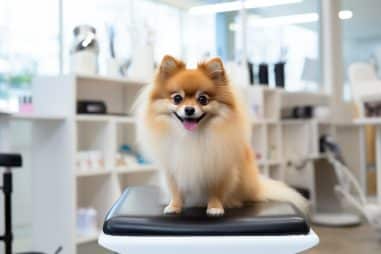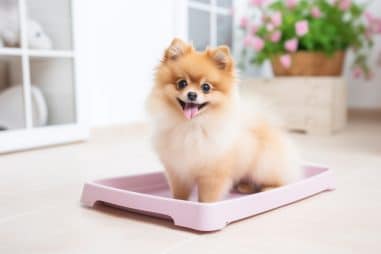Grooming your Pomeranian is about more than just keeping your dog looking cute. It’s crucial for your pet’s overall health and well-being. From bathing and brushing to ear cleaning and nail trimming, proper grooming helps you spot potential health issues before they become serious. This article aims to provide you with a comprehensive guide on how to keep your Pomeranian’s coat, skin, ears, and paws healthy. A well-groomed Pomeranian is a happy Pomeranian!
Do Pomeranians Need Grooming?
Absolutely, Pomeranians do need regular grooming. These adorable fluff balls come with a double coat that needs a lot of attention to stay in top shape. Neglecting grooming can lead to a variety of problems like matting, skin issues, and even bad odors.
On the health front, poor grooming can lead to skin infections, as mats can hide parasites like ticks or fleas. Imagine wearing the same clothes for weeks; it would be uncomfortable, right? It’s the same for your Pomeranian if their coat is left untended.
Psychologically, grooming also helps strengthen the bond between you and your pet. Your Pomeranian learns to trust you even more as you handle them. Plus, most dogs love the feeling of being clean, and your Pomeranian is no different!
So, grooming is not just about looks. It’s about your Pomeranian’s overall health and happiness.
Essential Tools for Grooming a Pomeranian
Before diving in, you’ll need to get your hands on some grooming tools. Here are some of the essentials:
- Brushes: A slicker brush and a comb are necessary for keeping your Pomeranian’s coat tangle-free.
- Clippers and Scissors: You’ll need a good pair of grooming scissors and perhaps a set of electric clippers for minor trims.
- Shampoos and Conditioners: Opt for hypoallergenic or oatmeal-based shampoos designed for dogs with double coats.
- Ear Cleaning Solutions: A vet-approved ear cleaning solution can help keep your Pomeranian’s ears healthy.
- Towels and Dryers: Soft towels and a pet-friendly hair dryer can make the bathing process much easier.
Remember, quality tools will make the grooming process easier and safer for both you and your Pomeranian. The initial cost for all these tools can be around $100 to $150.
How to Brush Pomeranians
Brushing your Pomeranian’s double coat is a bit of a ritual. It’s something that should be done multiple times a week, if not daily. You’ll want to start by using a slicker brush to remove loose hairs and work through any tangles. Always brush in the direction of hair growth.
Be gentle around sensitive areas like the belly and ears. You don’t want to pull on any tangles too hard. For mats that you can’t easily brush out, you can use scissors to carefully cut them away.
After you’ve worked through the entire coat with the slicker brush, go over it again with a comb to catch any tangles you might have missed. Regular brushing not only keeps the coat looking great but also stimulates blood flow to the skin, which can improve overall coat health.
Does a Pomeranian Smell?
Just like any other dog, Pomeranians can develop an unpleasant smell if not properly groomed. There could be a variety of reasons for this, from a dirty coat to dental issues. Grooming is your first line of defense against bad smells.
Using odor-neutralizing shampoos can help a lot. These special shampoos tackle the bacteria that cause bad smells. But remember, excessive bathing can dry out your Pomeranian’s skin, so use these products wisely.
Dental care is another overlooked area that can cause bad odors. Chewing toys and regular teeth brushing can make a huge difference. If you notice a sudden change in how your Pomeranian smells, it’s a good idea to consult your vet as it could be a sign of an underlying issue.
How Often Should You Bathe Pomeranians?
A bath every 3 to 6 weeks is generally enough for most Pomeranians. Frequent bathing can strip the natural oils from your Pomeranian’s skin and lead to dryness. On the flip side, going too long between baths can result in an oily, smelly coat.
Make sure to use a dog-specific shampoo that matches your Pomeranian’s skin type. After the bath, dry your dog thoroughly. You can use towels and a pet-friendly hair dryer on a low setting. Make sure to keep the dryer at least 30 centimeters (about 12 inches) away from your pet’s skin to avoid overheating.
How to Clean Pomeranians’ Ears
Cleaning your Pomeranian’s ears should be a part of the regular grooming routine. Dirty ears can lead to infections and a lot of discomfort. Use a vet-approved ear-cleaning solution and a cotton ball to clean the inside of each ear.
Gently swab the inside of the ear, being careful not to go too deep. If you notice any signs of an ear infection like redness, swelling, or bad odor, it’s time for a vet visit.
How to Trim a Pomeranian’s Paws
Your Pomeranian’s paws are more than just cute; they’re also sensitive and require regular care. Use grooming scissors to trim the hair between the paw pads. This helps to reduce the amount of dirt and debris that can get caught there.
Trimming the paws regularly can also help improve traction on slippery surfaces. Some Pomeranians can develop small mats between their paw pads, which can be uncomfortable. Regular trimming can prevent this problem.
How to Cut Pomeranians’ Nails
Long nails can be problematic for Pomeranians. They can make walking uncomfortable and even lead to posture issues. A pair of dog-specific nail clippers or a grinder can make the job easier.
If you can hear your dog’s nails clicking on the floor, it’s definitely time for a trim. While trimming, be careful not to cut into the quick, the pinkish area inside the nail, as it can be painful and may bleed. If you’re unsure, it’s always best to consult a professional.
When Does a Pomeranian Stop Teething?
Teething can be a challenging time for any puppy, and Pomeranians are no exception. Puppies generally finish teething by the time they are about 6 to 7 months old. During this period, it’s essential to maintain good dental hygiene.
Chew toys can be a lifesaver during teething as they not only keep your pup entertained but also help in reducing gum soreness. If you notice any problems like excessive drooling, lack of appetite, or unusual behavior, it’s a good idea to check with your vet.
How Often Should Pomeranians Be Groomed?
How often you should groom your Pomeranian depends on a variety of factors, including their activity level, age, and even the season. As a general rule, a full grooming session, including a bath and haircut, should be done at least once a month.
In between these sessions, regular brushing and spot checks for issues like matting or ear infections are crucial. Establishing a consistent grooming routine will help keep your Pomeranian looking and feeling their best.
Conclusion
Grooming your Pomeranian is not just about keeping them looking good; it’s a fundamental aspect of their overall health and well-being. By following a consistent grooming routine, you’re not just improving your dog’s appearance, but also helping them live a healthier, happier life.








